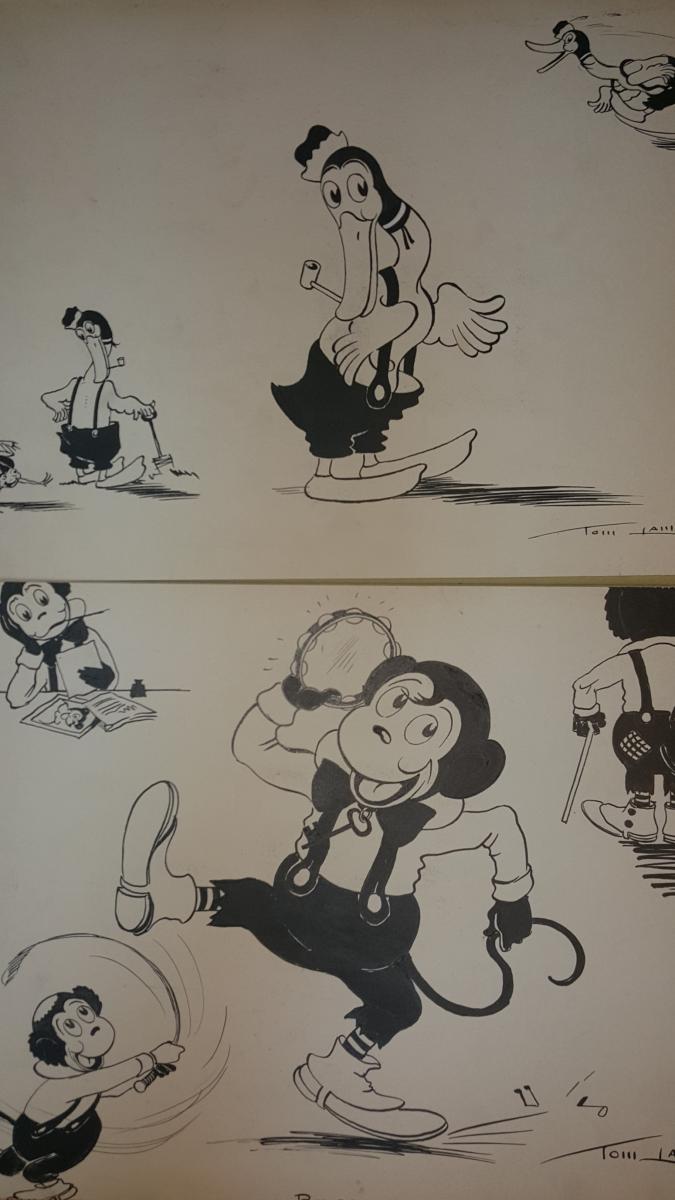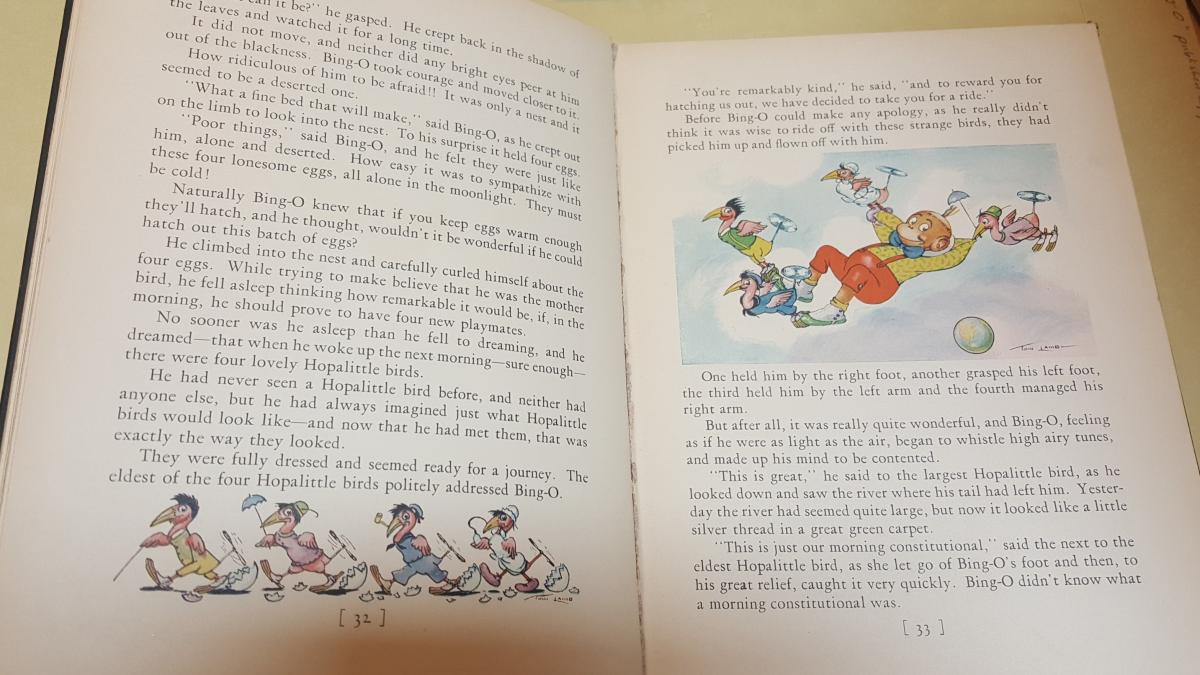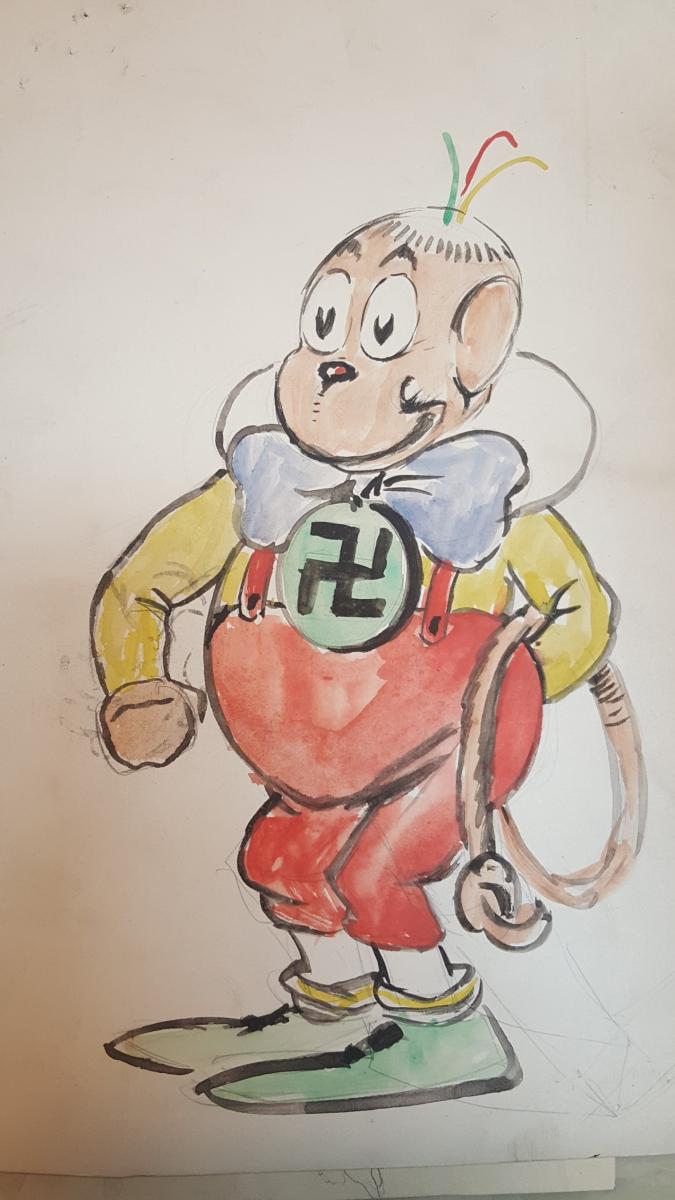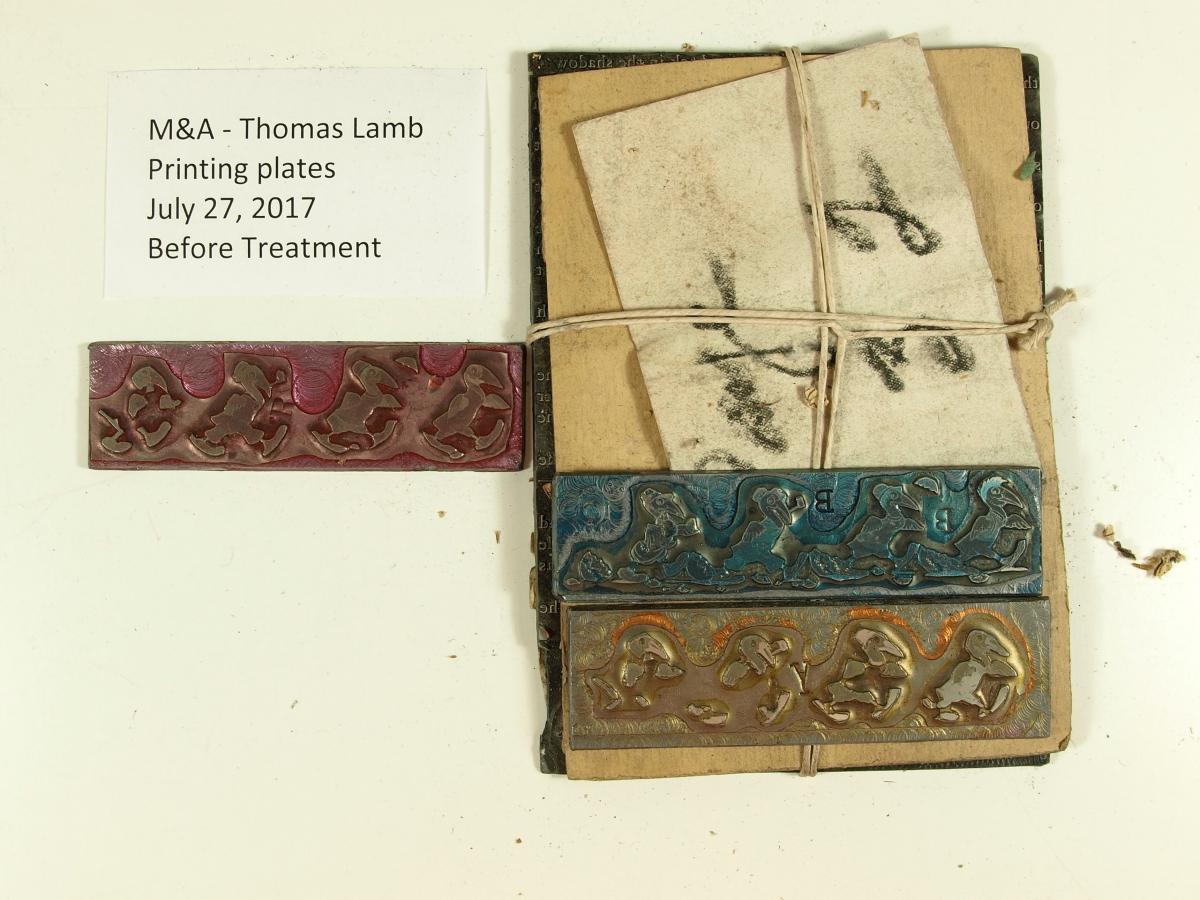
It may be hard to put your finger on exactly what makes an enduring children’s book. Classic books have engaging and imaginative pictures and simple themes with characters that both kids and adults love. Amazingly, the 75+ year old Mike Mulligan and His Steam Shovel remains popular, contrary to its depiction of a bygone technological era.
In stark contrast is The Tale of Bing-O by Thomas Lamb, a story in Hagley’s archives that has long since been forgotten by all but a few people.

The Tale of Bing-O is a children’s chapter book following the exploits of one unusual monkey. Bing-O has a set of hairs on his head that function as a compass. He lives in the jungle, where all of the creatures are his friends. Most striking is a large swastika button hanging from his bow-tie. Keep in mind that Bing-O was published in 1927, before the Nazi regime had so thoroughly appropriated this symbol, changing it from an emblem of peace to an eduring emblem of hate.

swastika, not yet a Nazi symbol,
on his chest.
The Tale of Bing-O was published by Volland Books, a Chicago based company of the early 20th century known for high-quality greeting cards and books. Their books were sold in boxes upon which the illustrated cover of the book was reproduced in color. The box that contains Tom Lamb’s own office copy was overpainted to turn the swastika on Bing-O’s chest into a star, presumably so that it could be prominently displayed.
Lamb created the Bing-O character and wrote the story, which is highly illustrated with many color images printed with relief plates (one each for yellow, blue, magenta, and black inks which are printed in sequence to make the full color image).
Hagley has the various stages of the manuscript, and original drawings showing the development of the characters, as well as the original printing plates. One box of printing plates was recently re-discovered and brought into the Conservation lab for assessment.
This wooden box, only a bit larger than a shoebox, was so heavy it felt like something that could be used in place of cement shoes! Inside were the printing plates, still inked, and packed in 1930s newspaper pages.

The four plates used to print each illustration for Bing-O were grouped and tied together with a sheet of blotter paper indicating the page number. The newspaper wrappings had been harvested by mice as nesting material, but the plates appear to be in good condition, even though the storage box was far from archival. (Metals can be corroded by acids from wood or low-quality paper, as well as humid conditions).
These plates have not been analyzed, but their weight makes me suspect that lead may be present. Therefore, gloves should be worn during handling.
Thomas Lamb had a diverse career in the design world, spanning from illustrator, writer, and creator of children’s cartooned hankies, to ergonomic handle designer. Exactly what was the reason for Mr. Lamb’s choice of the swastika for the Bing-O character? The answer may very well live amongst his papers, archived at the Manuscripts and Archives department at Hagley Museum and Library.
Laura Wahl is the Library Conservator at Hagley Museum and Library.
